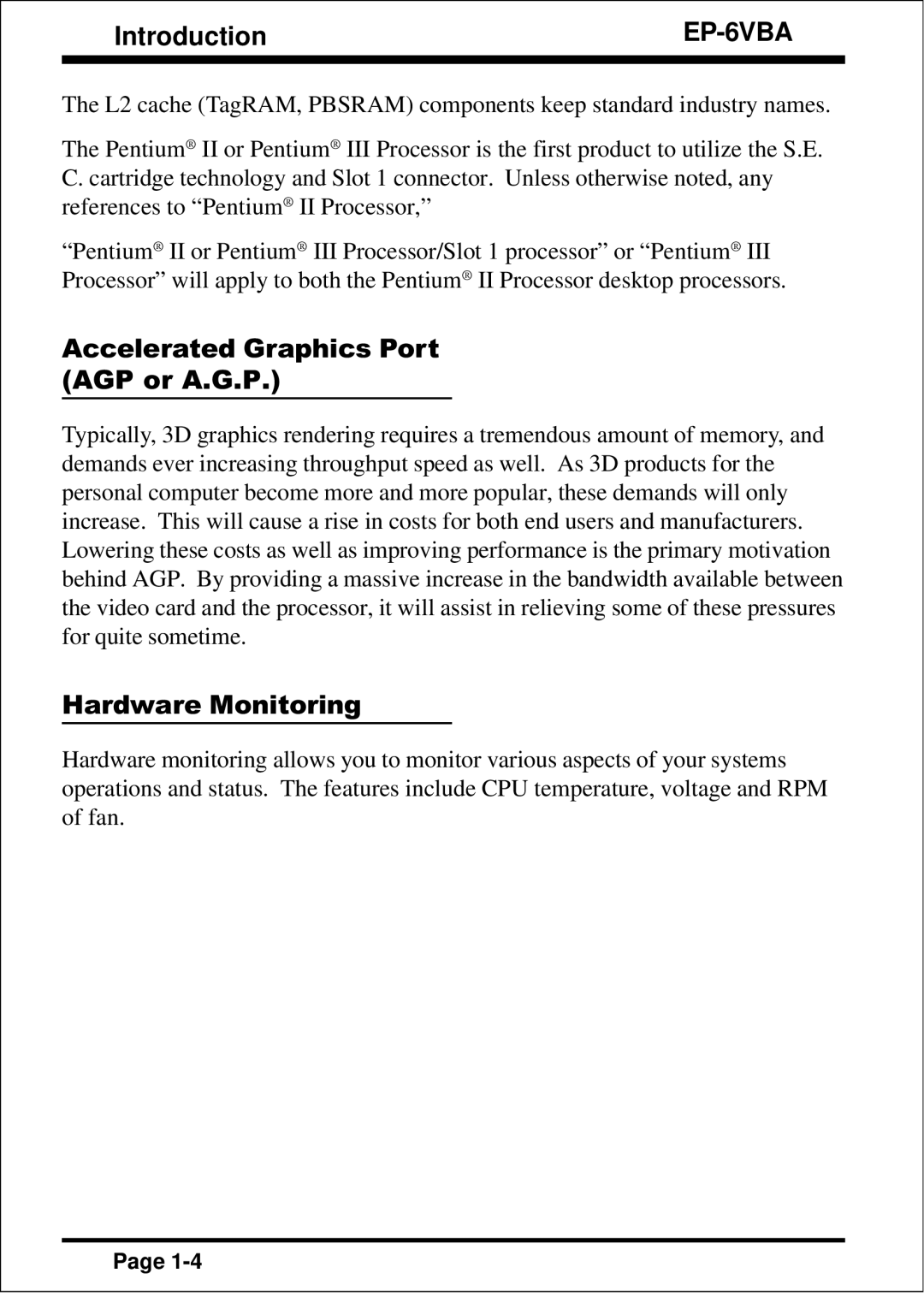
Introduction |
|
|
|
|
|
The L2 cache (TagRAM, PBSRAM) components keep standard industry names.
The Pentium® II or Pentium® III Processor is the first product to utilize the S.E. C. cartridge technology and Slot 1 connector. Unless otherwise noted, any references to “Pentium ® II Processor,”
“Pentium ® II or Pentium® III Processor/Slot 1 processor” or “Pentium ® III Processor” will apply to both the Pentium ® II Processor desktop processors.
Accelerated Graphics Port (AGP or A.G.P.)
Typically, 3D graphics rendering requires a tremendous amount of memory, and demands ever increasing throughput speed as well. As 3D products for the personal computer become more and more popular, these demands will only increase. This will cause a rise in costs for both end users and manufacturers. Lowering these costs as well as improving performance is the primary motivation behind AGP. By providing a massive increase in the bandwidth available between the video card and the processor, it will assist in relieving some of these pressures for quite sometime.
Hardware Monitoring
Hardware monitoring allows you to monitor various aspects of your systems operations and status. The features include CPU temperature, voltage and RPM of fan.
Page
